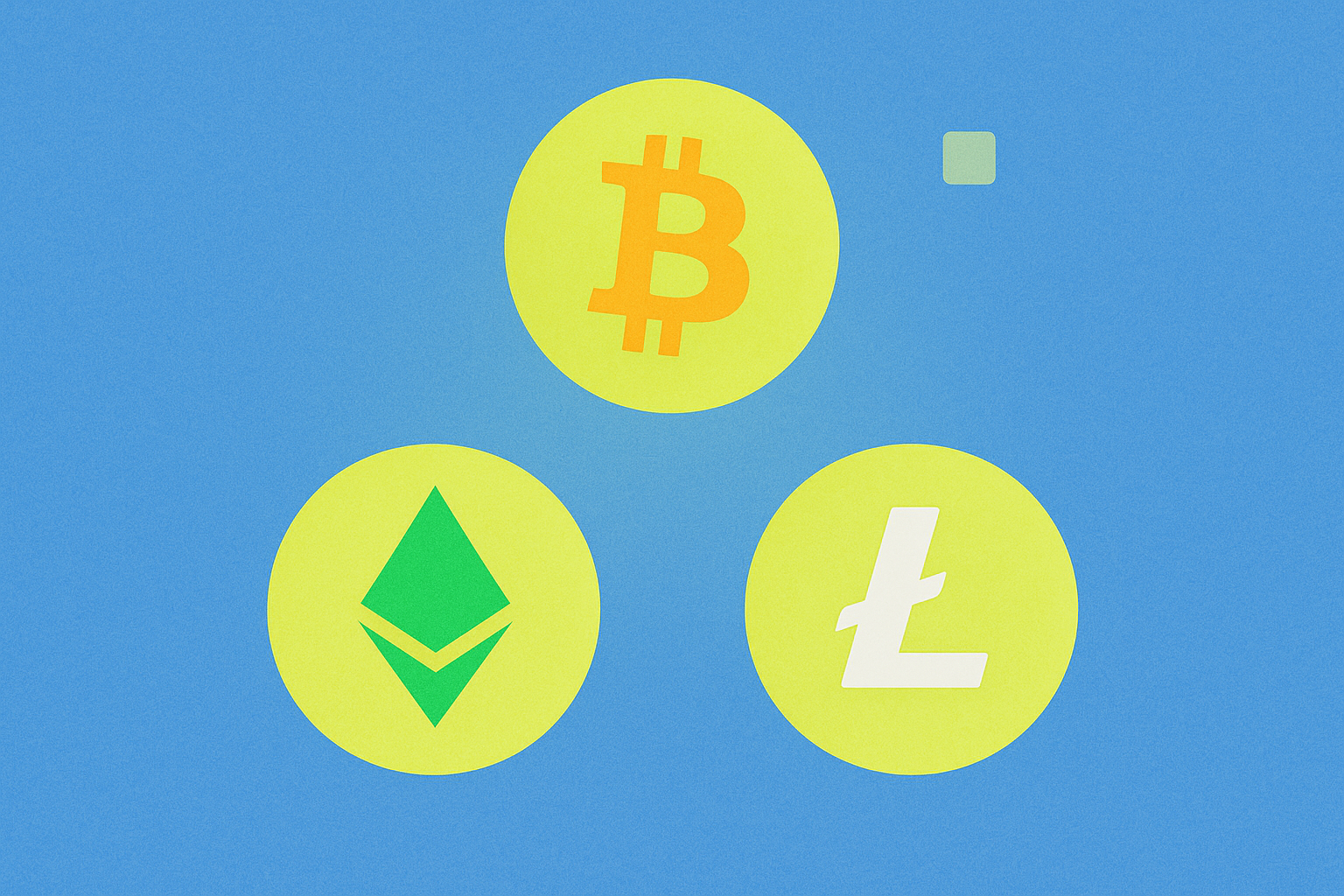Pourquoi stablecoin est important: Une plongée profonde dans les actifs stables des actifs cryptographiques

Comprendre stablecoin
Les stablecoins sont des cryptomonnaies conçues pour maintenir une valeur stable, généralement liée à des actifs du monde réel tels que le dollar américain ou l'or. Grâce à divers mécanismes, notamment la garantie en monnaie fiduciaire, la garantie en cryptomonnaie et l'ajustement algorithmique, les stablecoins peuvent atteindre cette stabilité. L'objectif principal des stablecoins est de fournir un moyen fiable d'échange et de stockage de valeur, comblant ainsi le fossé entre le marché crypto volatil et le système financier traditionnel.
L'importance des stablecoin
Réduire la volatilité
Un des plus grands défis du marché des actifs cryptographiques est sa volatilité inhérente. Les actifs cryptographiques populaires comme le Bitcoin peuvent connaître des fluctuations de prix significatives en peu de temps, ce qui les rend inadaptés en tant qu'outil pour les transactions quotidiennes ou en tant que réserve de valeur fiable. Les stablecoins résolvent ce problème en maintenant une valeur stable, permettant aux utilisateurs de protéger leurs fonds sans sortir complètement de l'écosystème des actifs cryptographiques. Cette stabilité est particulièrement importante pendant les baisses du marché ou les hausses de prix, car les investisseurs ont besoin d'un endroit fiable pour stocker leur capital.
Paiements mondiaux améliorés
Les stablecoins offrent une alternative de paiement international plus rapide et plus économique que les méthodes bancaires traditionnelles. Ils permettent des transferts en temps réel, réduisent les temps d'attente et conviennent à une utilisation quotidienne. Par exemple, les stablecoins peuvent être utilisés pour des transactions entre pairs (P2P), permettant aux utilisateurs d'envoyer de l'argent à des amis, à leur famille ou à des marchands du monde entier sans se soucier de la volatilité des cryptomonnaies. Cela est particulièrement bénéfique pour ceux qui envoient de l'argent dans leur ville natale, car cela réduit les coûts et raccourcit les délais de transfert.
Promouvoir l'inclusion financière
Les stablecoins fournissent une devise numérique accessible qui ne dépend pas d'actifs de cryptage volatils ou de virements coûteux. Cela en fait une option attrayante pour les utilisateurs dans des régions avec une couverture limitée des services bancaires traditionnels, favorisant l'inclusion financière. Par exemple, un agriculteur à petite échelle dans une zone reculée peut déposer directement un prêt sous forme de stablecoins dans son portefeuille mobile, l'utiliser pour acheter des graines et de l'équipement, et rembourser le prêt avec les revenus de la récolte, le tout sans se rendre dans une banque physique.
Support pour la finance décentralisée (DeFi)
Les stablecoins jouent un rôle crucial dans la croissance de la finance décentralisée (DeFi), en fournissant un moyen d'échange fiable pour les plateformes DeFi. Ils permettent aux utilisateurs de trader, d'emprunter et de prêter tout en veillant à ce que la valeur de leurs actifs ne chute pas soudainement. Cette stabilité favorise la confiance et encourage davantage d'utilisateurs à participer à l'espace des actifs cryptographiques. Par exemple, les stablecoins sont souvent utilisés comme garantie dans les plateformes de prêt et les stratégies de yield farming, offrant des rendements plus stables.
Types de stablecoin
Stablecoin adossée à des fiat
Les stablecoins adossés à des devises fiduciaires sont le type le plus courant, indexés sur des devises fiduciaires traditionnelles (comme le dollar américain). Ces stablecoins sont garantis par des réserves en devises fiduciaires détenues par l'émetteur pour garantir leur stabilité de valeur. Les exemples courants incluentTether (USDT) et USD Coin (USDC)Ils sont largement utilisés dans le commerce et le stockage de valeur.
Stablecoin garanti par des actifs crypto
Les stablecoins adossés à des actifs cryptographiques sont garantis par d'autres cryptomonnaies. Ils offrent une alternative décentralisée aux stablecoins adossés à des devises fiduciaires, mais présentent également le risque de fluctuations des actifs cryptographiques servant de garantie. Un exemple estDAI, il est pris en charge par Ethereum et d'autres actifs cryptographiques.
Stablecoin algorithmique
Les stablecoins algorithmiques utilisent des algorithmes pour ajuster l'offre de monnaie afin de maintenir sa valeur. Bien qu'ils offrent un haut degré de décentralisation, ils sont également vulnérables aux fluctuations du marché et nécessitent une gestion attentive pour maintenir leur parité.
Défis et risques
Malgré les nombreux avantages des stablecoins, ils ne sont pas sans défis. Les problèmes de centralisation de certains stablecoins ont suscité des inquiétudes car ils sont généralement émis et gérés par des entités centralisées. Le manque de transparence et les problèmes réglementaires comportent également des risques, en particulier pour les stablecoins algorithmiques et adossés à des actifs cryptographiques. De plus, l'interopérabilité entre les stablecoins sur différentes blockchains peut poser problème, comme on peut le voir lors d'échanges entre différents réseaux blockchain.
Conclusion
Les stablecoins sont devenus une partie indispensable de l'écosystème des actifs cryptographiques, offrant stabilité, fiabilité et de nombreuses applications dans le monde réel. Ils aident à réduire la volatilité, à améliorer les paiements mondiaux, à promouvoir l'inclusion financière et à soutenir le développement de la finance décentralisée. Alors que le marché des cryptomonnaies continue d'évoluer, les stablecoins pourraient jouer un rôle plus important dans le rapprochement des mondes financier traditionnel et des actifs numériques. Comprendre les avantages et les défis des stablecoins est crucial pour toute personne souhaitant naviguer efficacement dans le domaine des actifs cryptographiques.
“

Explorer les Stablecoins: Comment ils stimulent le développement de l'économie de l'encodage

Quelle sera la capitalisation boursière de l'USDC en 2025 ? Analyse du paysage du marché des stablecoins.

Analyse des stablecoins : solution Cryptoactifs pour atténuer les fluctuations de Gate.com

Comment acheter de l'USDC en 2025 : Un guide complet pour les débutants investisseurs

Prévision de prix de l'USDC : Tendances et perspectives d'investissement sur le marché des stablecoins pour 2025

Analyse du prix du jeton USD en 2025 : Une comparaison avec la monnaie stable Ethena et d'autres

Combo quotidien de Dropee 9 décembre 2025

Tomarket Daily Combo 9 décembre 2025

Découvrez les opportunités offertes par la tokenisation des actifs réels dans l’écosystème Web3

Découvrez des NFT de collection exclusifs sur le thème du yacht, conçus pour les passionnés de luxe

Outils essentiels pour une gestion performante des crypto faucets





